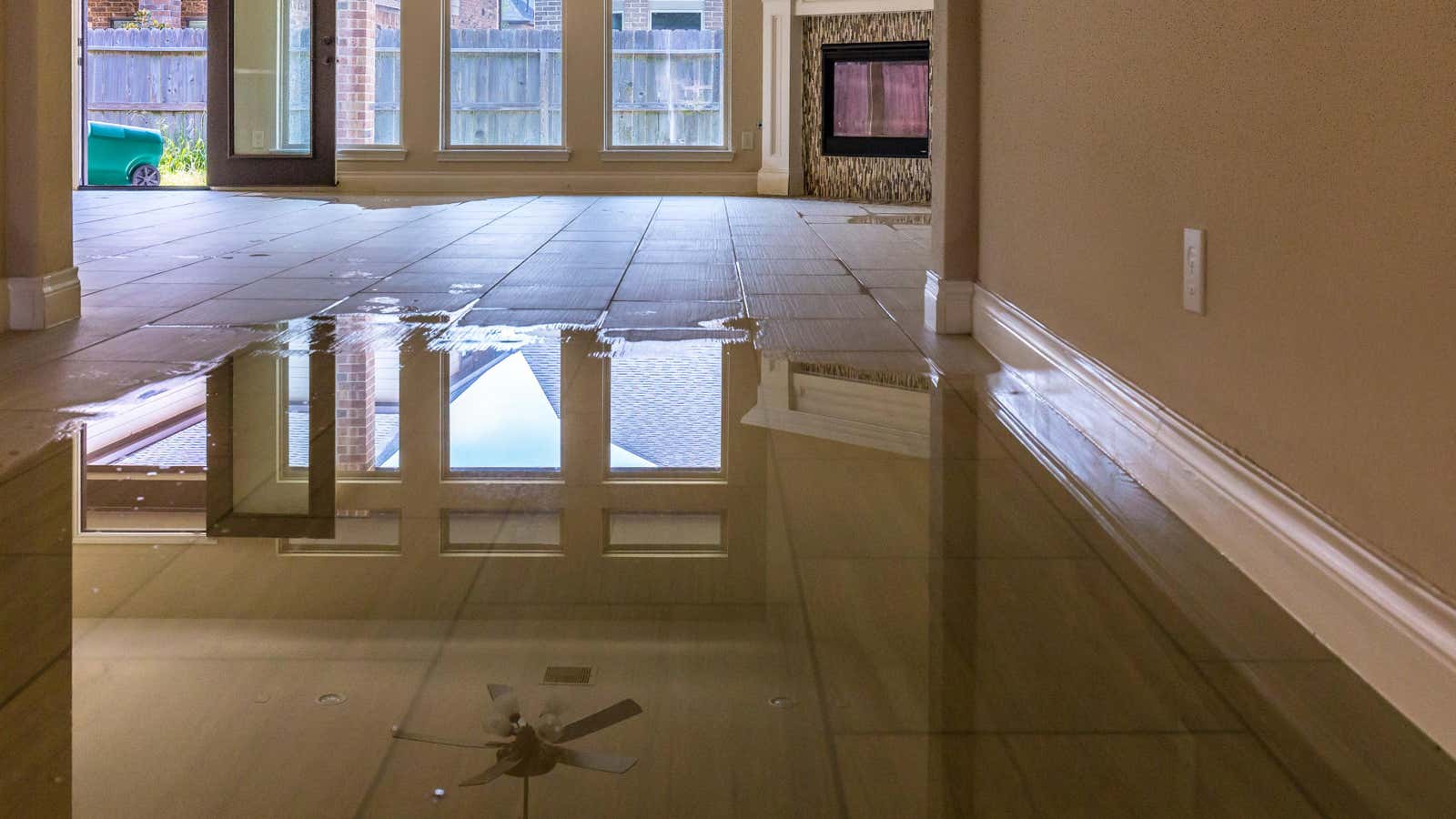Everything You Need to Do If Your Home Is Water Damaged

A burst pipe or a leaking water heater can wreak havoc on water in the same way that a flood can, and either way, it means bad news for your home. If your home has standing water where it shouldn’t, there are a few things you can do right now to limit the damage. While restoration often needs to be handled by a professional, these basic steps will help get the process started and save you time, hassle and money down the road.
Prevent water damage in the first place
One preventative measure you can take is to install a water detection alarm that will notify you immediately if water is found where it shouldn’t be. They come in traditional types of noise cancellation as well as intelligent varieties that will send you alerts. Smart water sensors will often also notify you when the temperature drops below freezing, which is a useful warning if your home is prone to freezing pipes.
Find the source of the leak(s)
If it is not clear where the water came from, you first need to find the source and eliminate it. Check the walls and ceiling for damage or signs of where water has leaked from, whether it is running down the wall or dripping from the ceiling. If water is still coming in and you know the source is not a flooded street, shut off the water supply until the leak can be found and repaired. If water is leaking from the roof, cover it with a tarp as a temporary measure until repairs are made. Water damage in the corners of windows or exterior walls is more difficult to repair, but if there is a way to coat it on the outside and then dry it on the inside, you can prevent the damage from worsening until you call for professional help. .
Dry everything
If you have sustained water damage from a flood or a broken plumbing, the first thing to do is to dry the area as much as possible. Ventilation is the key to evaporating water and preventing condensation from forming on other surfaces in your home. As a first step, open windows and doors and turn on fans to dry out the room. You can also use a dehumidifier to dry things as quickly as possible.
Cleanse the dirt
If your water damage is caused by a flood or storm, your home may also have debris or dirt. This material can retain moisture and keep things wet longer. It is important to get rid of it as soon as possible. Using a broom for a small amount of dirt is a good option. For large areas, a shovel and a wet/dry vacuum cleaner will do. Use a snow shovel to remove the hard debris first, and then use a vacuum cleaner to remove the residue from the floor. And this applies not only to floors – cleaning all surfaces of debris will help to dry the damaged area faster.
Remove furniture from the floor
The next step is to remove furniture and other things from the floor. If you have a porch or other covered, dry area outside, place your furniture there so it can ventilate and dry, but getting up from a wet floor should be a priority. If you don’t have a suitable outdoor space to store your furniture while it dries, lift it up with bricks or overturned buckets to keep it out of the water. Upholstered furniture cannot be salvaged as it can soak and become a trap for mold and bacteria.
Clean the damaged area
After the floor has been cleaned, wipe down with a mild detergent, such as dish soap, to reduce active spores that can cause mold and mildew. Be sure to brush off the dirt, as this creates fertile ground for the growth of fungi and bacteria. Mold is a serious cause of flood damage, so removing it from floors and walls can make recovery much easier.